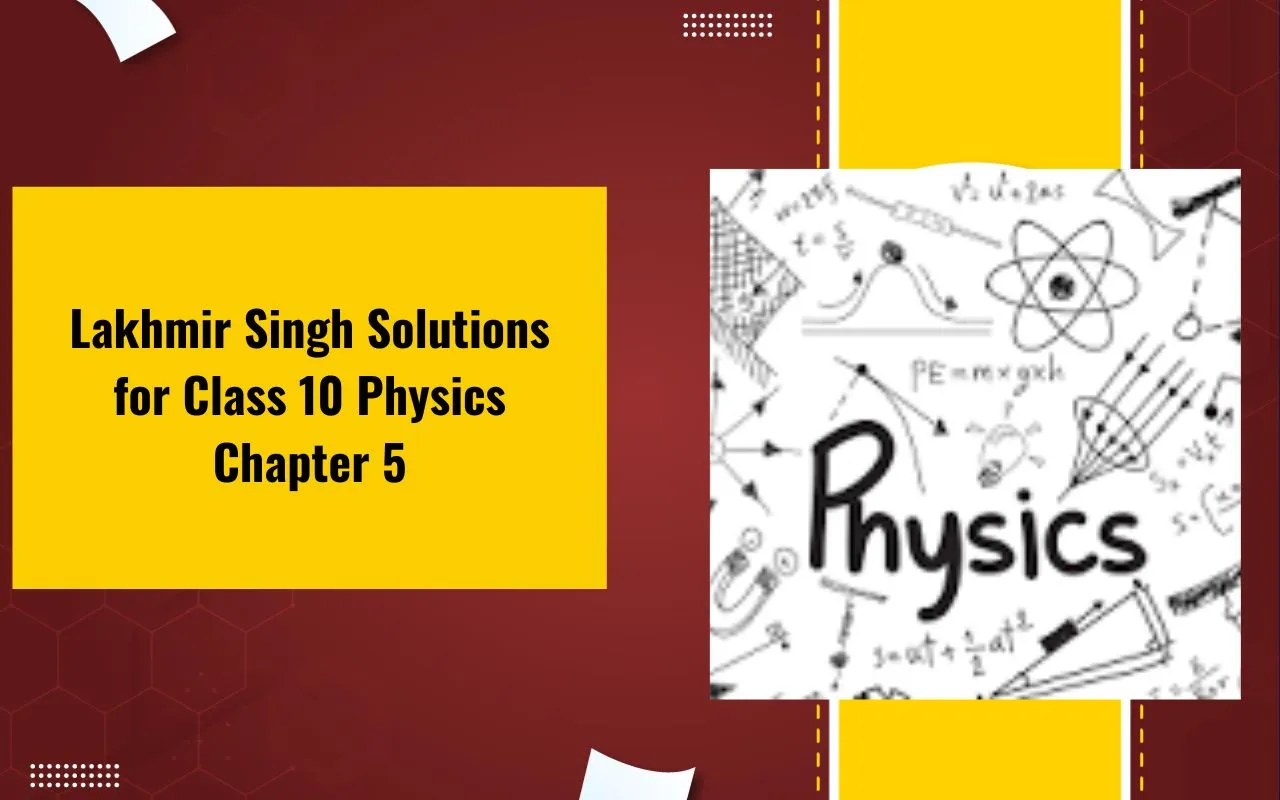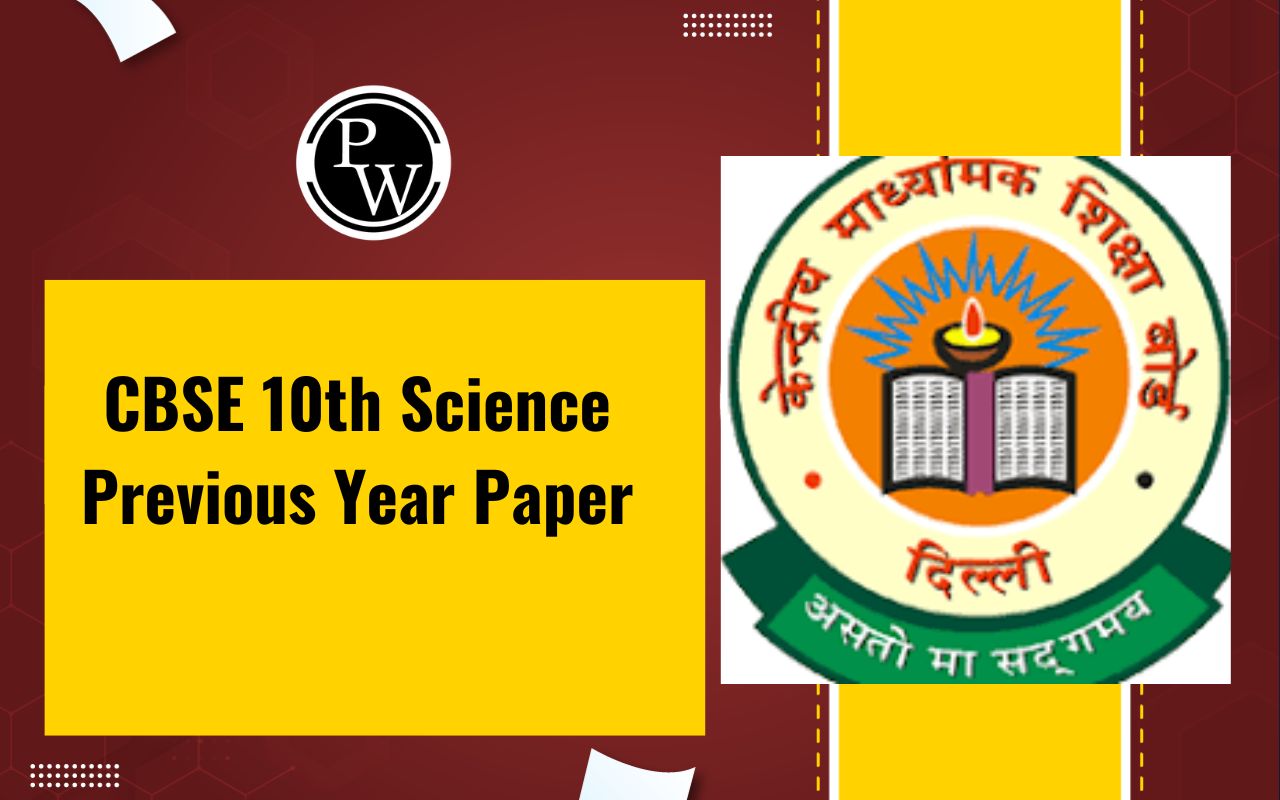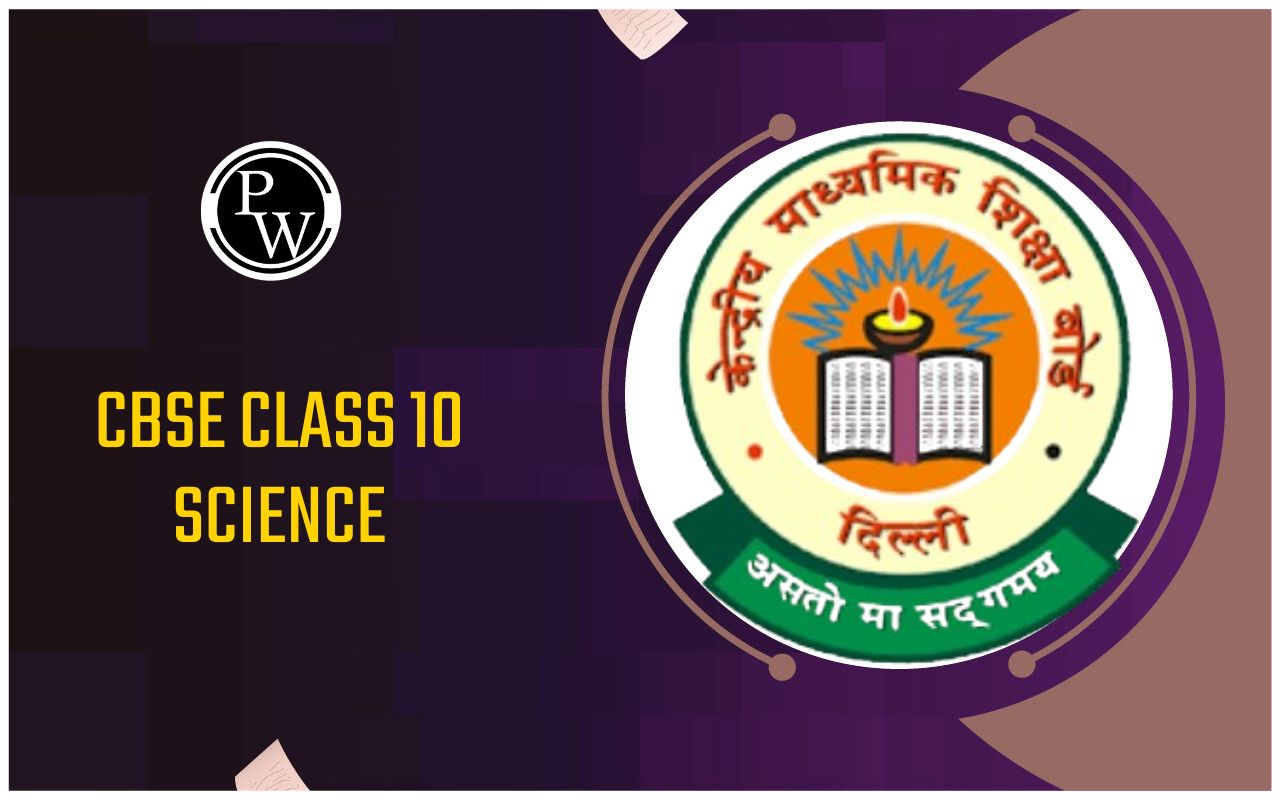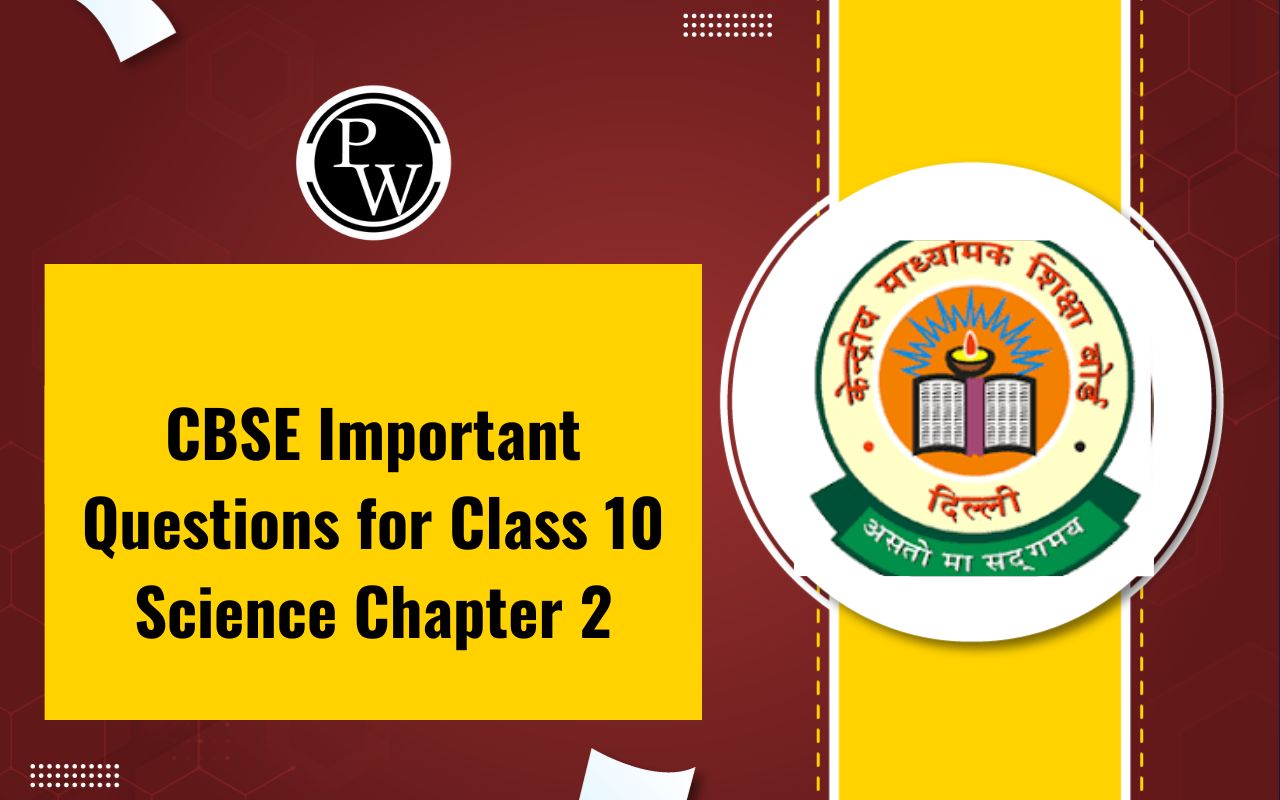

Lakhmir Singh Solutions for Class 10 Physics Chapter 5: Light is a form of energy that travels in a straight line and enables us to see objects. In Lakhmir Singh Solutions for Class 10 Physics Chapter 5 Refraction of Light, the concept of refraction is thoroughly explained as the bending of light when it passes from one medium to another of different density.
This bending occurs due to the change in the speed of light as it moves between mediums. The chapter covers important topics like the lens formula laws of refraction, refractive index, and Snell's law, which defines the relationship between the angle of incidence and the angle of refraction.
It also discusses the formation of images by concave and convex lenses, their applications, and phenomena such as real and apparent depth. The solutions are presented with clear explanations, solved examples, and diagrams, making it easier for students to understand the concepts and prepare effectively for their exams.
Lakhmir Singh Solutions for Class 10 Physics Chapter 5 Overview
Lakhmir Singh Solutions for Class 10 Physics Chapter 5 Refraction of Light provides a thorough explanation of the concepts related to the bending of light when it travels from one medium to another.
This chapter is essential for understanding various optical phenomena and their real-life applications.
The chapter starts with the basic concept of refraction, which is the change in the direction of light as it passes obliquely from one transparent medium to another due to a change in speed. The chapter explains the following key concepts:
-
Laws of Refraction:
-
The incident ray, the refracted ray, and the normal to the interface all lie in the same plane.
-
The ratio of the sine of the angle of incidence to the sine of the angle of refraction is constant for a given pair of media, known as Snell’s Law.
-
Refraction Through Glass Slab:
-
Explanation of how light passes through a rectangular glass slab and emerges parallel to the incident ray but slightly displaced.
-
Refraction by Lenses:
-
Introduction to convex and concave lenses.
-
Formation of images by lenses and their uses.
-
Lens formula, magnification, and power of lenses are also explained with relevant formulas and examples.
-
Real and Apparent Depth:
-
Understanding the phenomenon of apparent depth due to refraction.
-
Explanation of how objects appear raised when viewed through a denser medium.
-
Applications of Refraction:
-
Various practical applications, such as lenses in spectacles, cameras, microscopes, and telescopes.
Lakhmir Singh Solutions for Class 10 Physics Chapter 5 PDF
The Lakhmir Singh Solutions for Class 10 Physics Chapter 5 Refraction of Light pdf provides a detailed explanation of how light bends when it travels from one medium to another. It covers important concepts like the laws of refraction, refractive index, Snell’s law, and refraction through glass slabs and lenses. The solutions explain how images are formed by concave and convex lenses and their applications in everyday life. The chapter also discusses real and apparent depth, providing clear diagrams and solved examples to make understanding easier. You can access the complete solutions from the Lakhmir Singh Solutions for Class 10 Physics Chapter 5 pdf link below.
Do you need help with your homework or preparing for exams?
Study without using the internet
Lakhmir Singh Solutions Class 10 Physics Chapter 5 Refraction of Light
Lakhmir Singh Solutions for Class 10 Physics Chapter 5 Refraction of Light provides easy-to-understand answers related to the bending of light when it moves from one medium to another. The solutions include clear explanations and diagrams to help students understand the concepts better. Here are the solutions to help you with your exam preparation.
Page No: 219
Very Short Answer Type Questions
Q1. If a ray of light goes from a rarer medium to a denser medium, will it bend towards the normal or away from it?
Answer:
The light ray will bend towards the normal.
Q2. If a ray of light goes from a denser medium to rare medium, will it bend towards the normal or away from the normal?
Answer:
The light ray will bend away from the normal.
Q3. A beam of light travelling in a rectangular glass slab emerges into air. Draw a ray diagram indicating the change in its path.
Answer:
Following is the ray diagram of a beam of light travelling in a rectangular glass slab emerging into air.
Q4. A beam of light travelling in air is incident on water. Draw a ray diagram indicating the change in its path in water.
Answer:
Following is the ray diagram of a beam of light travelling in air which is incident on water:
Q5. A ray of light travelling in water emerges into air. Draw a ray diagram indicating the change in its path.
Answer:
Following is the ray of light travelling in water emerging into air:
Q6. A ray of light travelling in air is incident on a parallel-sided glass slab. Draw a ray diagram indicating the change in its path inn glass.
Answer:
Following is the ray of light travelling in air which is incident on a parallel-sided glass slab:
Q7. A ray of light travelling in glass emerges into air. State whether it will bend towards the normal or away from the normal.
Answer:
When the light ray is travelling in a glass emerging into air, the ray will bend away from the normal.
Q8. A ray of light travelling in air enters obliquely into water. Does the ray of light bend towards the normal or away from the normal? Why?
Answer:
When the light ray is travelling in air entering into water obliquely, the light ray bends towards the normal because water as a medium has an optically denser medium than air.
Q9. A ray of light goes from water into air. Will it bend towards the normal or away from the normal?
Answer:
When the light ray goes from water into air, the light ray will bend away from the normal.
Q10. State two effects caused by the refraction of light.
Answer:
Following are the two effects caused by the refraction of light:
a) An object placed under water appears to be raised.
b) A pool water appears to be less deeper than it is in reality.
Q11. Name the phenomenon due to which a swimming pool appears less deep than it really is.
Answer:
The phenomenon is known as refraction of light.
Q12. When a ray of light passes from air into glass, is the angle of refraction greater than or less than the angle of incidence?
Answer:
When the ray of light passes from air into glass, the angle of refraction is less than the angle of incidence.
Q13. A ray of light passes from air into a block of glass. Does it bend towards the normal or away from it?
Answer:
When a ray of light passes from air into a block of glass, the ray will bend towards the normal.
Q14. As light rays pass from water into glass, are they refracted towards the normal or away from the normal?
Answer:
When the light rays pass from water into glass, they bend towards the normal.
Q15. In which material do you think light rays travel faster: glass or air?
Answer:
The light rays travels faster in air when compared to the glass.
Q16. Which phenomenon of light makes the water to appear shallower than it really is?
Answer:
Refraction of light is the phenomenon that makes the water to appear shallower than it really is.
Q17. State whether the following statement is true or false:
Refraction occurs because light slows down in denser materials.
Answer:
The given statement is true.
Q18. Why does a ray of light bend when it travels from one medium to another?
Answer:
A ray of light bends from one medium to another when it travels because there is a change in the speed of the light.
Q19. Fill in the following blanks with suitable words:
a) Light travelling along a normal is ……….
b) Light bends when it passes from water into air. We say that it is …………
Answer:
a) Not
b) Refracted
Very Short Answer Type Questions
Q1. What name is given to the ratio of sine of angle of incidence to the sine of angle of refraction?
Answer:
The ratio of sine of angle of incidence to the sine of angle of refraction is known as refractive index.
Q2. Write the relation between the angle of incidence and the angle of refraction for a medium.
Answer:
The relation between the angle of incidence and the angle of refraction for a medium is refractive index. Refractive index is the ratio between the sine of the angle of incidence and the sine of the angle of refraction.
Q3. What is the unit of refractive index?
Answer:
There is no unit of refractive index.
Q4. Which has higher refractive index: water or glass?
Answer:
Glass has a higher refractive index than water.
Q5. Refractive indices of carbon disulphide and ethyl alcohol are 1.63 and 1.36 respectively. Which is optically denser?
Answer:
Carbon disulphide is more denser than the ethyl alcohol.
Q6. The refractive index of diamond is 2.24. What is the meaning of this statement is relation to the speed of light?
Answer:
The refractive index of diamond is 2.24 means that the ratio of the speed of light in air to the speed of the light in diamond is equal to 2.24.
Q7. If the refractive index for light going from air to diamond be 2.24, what will be the refractive index for light going from diamond to air?
Answer:
The refractive index from air to diamond is 2.24
The refractive index from diamond to air is ½.24 = 0.41
Q8. How is the refractive index of a material related to the speed of light in it?
Answer:
Refractive index of a material = (speed of light in vacuum)/(speed of light in the material)
Q9. Fill in the following blank with a suitable word:
When a ray of light goes from air into a clear material, you see the ray bend. How much the ray bends is determined by the ……… of the material.
Answer:
Refractive index.
Short Answer Types Questions
Q10. Give three examples of materials that refract light rays. What happens to the speed of light rays when they enter these materials?
Answer:
The three examples of materials that refract light rays are diamond, water, and glass. When the light rays enter these materials their speed reduces.
Q11. Define Snell’s law of refraction. A ray of light is incident on a glass slab at an angle of incidence of 60 degree. If the angle of refraction be 32.7 degree, calculate the refractive index of glass assuming sin 60 degree = 0.866 and sin 32.7 degree = 540.
Answer:
According to Snell’s law, the ratio of sine of angle of incidence to the sine of angle of refraction is equal to the constant for a given pair of media.
Refractive index = (sine of angle of incidence)/(sine of angle of refraction)
Given,
Angle of incidence = 60 degree
Angle of refraction = 32.4 degree
Refractive index = sin 60/sin 32.4
Refractive index = 1.603
Q12. The speed of light in vacuum and in two different glasses is given in the table below:
|
Medium |
Speed of light |
|
Vacuum |
3.00 × 108m/s |
|
Flint glass |
1.86 × 108m/s |
|
Crown glass |
1.97 × 108m/s |
a) Calculate the absolute refractive indexes of flint glass and crown glass.
b) Calculate the relative refractive index for light going from crown glass to flint glass.
Answer:
a) Refractive index of flint glass = (speed of light in vacuum)/(speed of light in flint glass) = 1.61
Refractive index of crown glass = (speed of light in vacuum)/(speed of crown glass) = 1.52
b) Relative refractive index of crown glass to flint glass = (speed of light in crown glass)/(speed of light in flint glass) = 1.059
Q13. The speed of light in air is 3 × 108m/s. In medium X its speed is 2 × 108m/s and in medium Y the speed of light is 2.5 × 108m/s. Calculate:
a) relative refractive index of air and X
b) relative refractive index of air and Y
c) relative refractive index of X and Y
Answer:
a) Relative refractive index of air and X = (speed of light in air)/(speed of light in medium X) = 1.5
b) Relative refractive index of air and Y = (speed of light in air)/(speed of light in medium Y) = 1.2
c) Relative refractive index of X and Y = (speed of light in X)/(speed of light in Y) = 0.8
Q14. What is the speed of light in a medium of refractive index 6/5 if its speed in air is 3,00,000 km/s?
Answer:
Refractive index of medium = 6/5 = 1.2
Speed of light in air = 3,00,000 km/s
We know that, refractive index of the medium = (speed of light in air)/(speed of light in medium)
1.2 = (300000)/(speed of light in medium)
Speed of light in medium = 2500000 km/s
Q15. The refractive index of glass is 1.5. Calculate the speed of light in glass. The speed of light in air is 3.00×108m/s.
Answer:
Given,
Refractive index of glass = 1.5
Speed of light in air = 3.00×108m/s
Refractive index of glass = (speed of light in air)/(speed of light in glass)
Speed of light in glass = 1.5
Q16. The speed of light in water is 2.25×108m/s. If the speed of light in vacuum be 3.00×108m/s, calculate the refractive index of water.
Answer:
Speed of light in vacuum = 3.00×108m/s
Speed of light in water = 2.23×108m/s
Refractive index of water = speed of light in vacuum/speed of light in water
Refractive index of water = 1.33
Q17. Light enters from air to diamond which has a refractive index of 2.42. Calculate the speed of light in diamond. The speed of light in air is 3.00×108m/s.
Answer:
Given,
Refractive index of diamond = 2.42
Speed of light in air = 3.00×108m/s
Refractive index of diamond = speed of light in air/speed of light in diamond
Speed of light in diamond = 1.239×108m/s
Benefits of Solving Lakhmir Singh Solutions for Class 10 Physics Chapter 5
Clear Understanding of Concepts: The solutions provide detailed explanations of topics like refraction, refractive index, Snell’s law, and lens formulas, helping students build a strong foundation in optics.
Step-by-Step Solutions: Each question is solved in a systematic manner, making it easy to follow and understand complex problems.
Improved Problem-Solving Skills: Practicing various types of questions enhances analytical and problem-solving skills, essential for scoring well in exams.
Accurate Diagrams: Well-labeled diagrams included in the solutions help students visualize the concepts better.
Effective Exam Preparation: Solving these solutions helps in thorough revision of the chapter, boosting confidence for board exams.
Self-Assessment: Students can check their answers and identify areas where they need improvement.
Lakhmir Singh Solutions for Class 10 Physics Chapter 5 FAQs
What is covered in Lakhmir Singh Solutions for Class 10 Physics Chapter 5?
Why is refraction important to study?
How do Lakhmir Singh Solutions help in exam preparation?
How do lenses form images?













